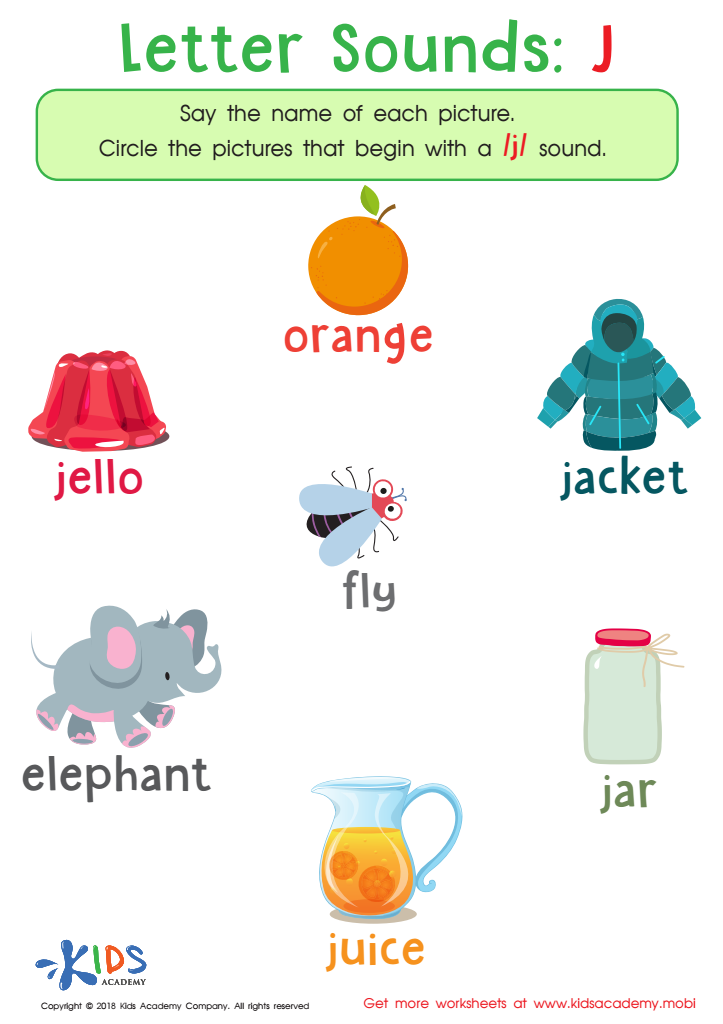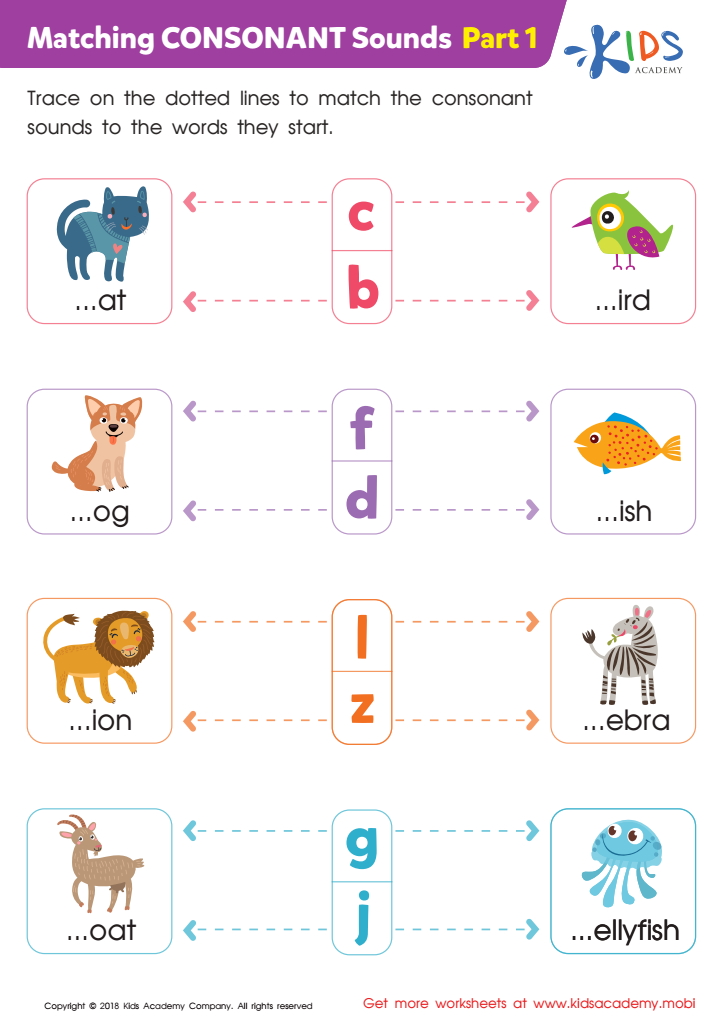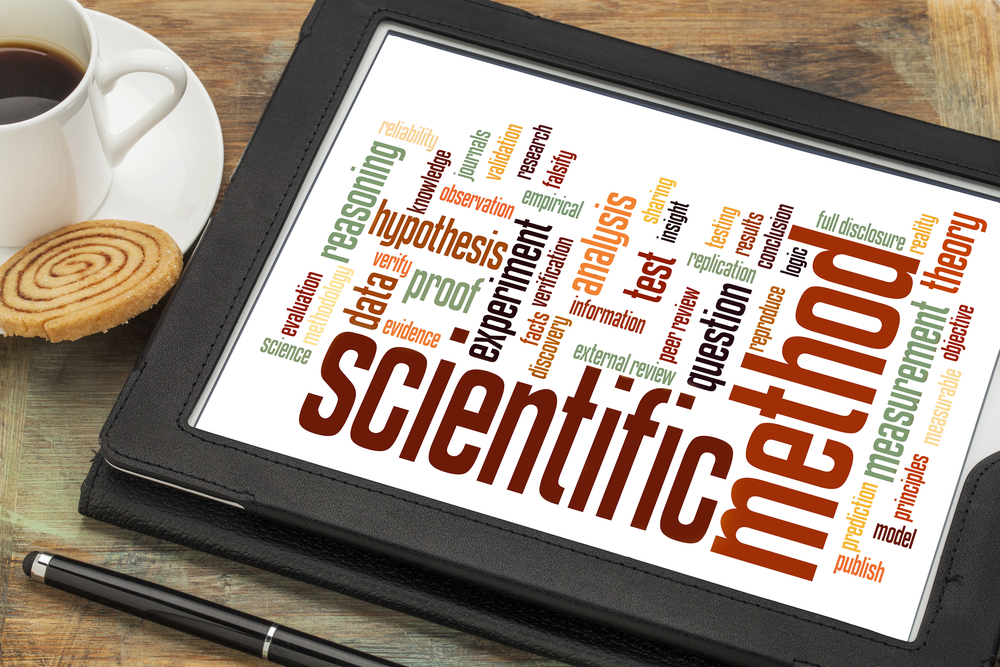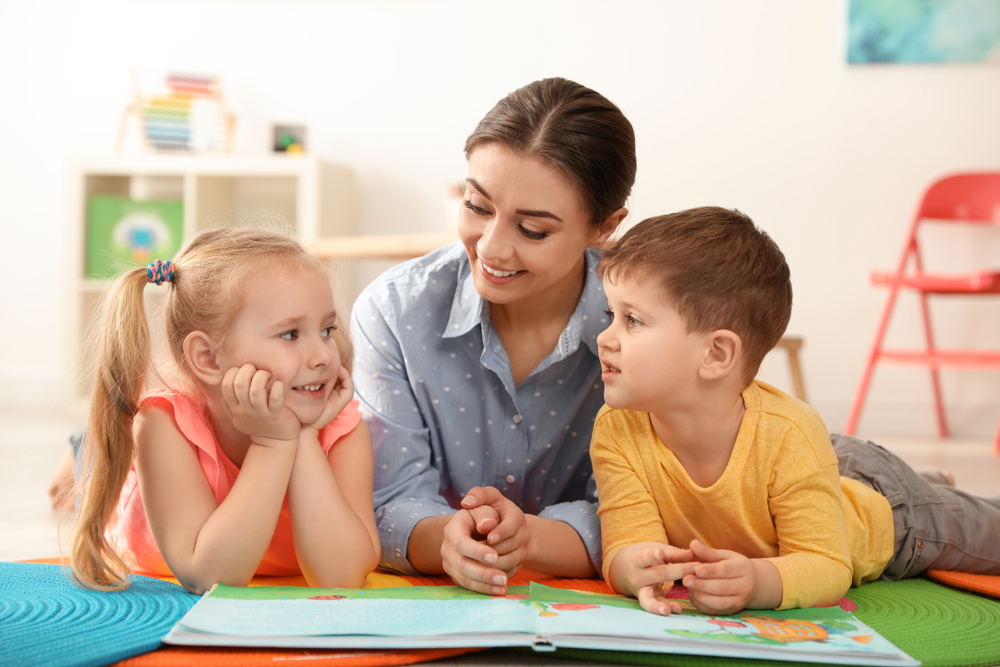Letter-sound correlation Normal Worksheets for Ages 4-5
3 filtered results
-
From - To
Help your little ones master the essential skill of letter-sound correlation with our engaging worksheets designed for ages 4-5. These thoughtfully crafted resources promote early literacy by encouraging children to connect letters with their corresponding sounds through fun activities and colorful illustrations. Each worksheet offers a variety of exercises, including matching letters to pictures and practicing phonetic sounds, ensuring a comprehensive learning experience. Our letter-sound correlation worksheets not only enhance reading readiness but also develop critical thinking and fine motor skills. Explore our collection and watch your child's confidence in reading grow as they embark on this exciting learning journey!


Letter Sounds: J Printable Worksheet


Matching Consonant Sounds: Part 1 Worksheet


Match–Up Game: Beginning Sounds Worksheet
Letter-sound correlation, or the relationship between letters and the sounds they represent, serves as a foundational element of early literacy development for children ages 4-5. Understanding this correlation is paramount because it lays the groundwork for reading and writing skills. Researchers emphasize that a child who can correctly identify sounds associated with letters will have an easier time decoding words, which is crucial for reading fluency.
Parents and teachers should be concerned about letter-sound correlation because it fosters phonemic awareness, empowering children to manipulate sounds in language. This skill aids in spelling and enhances vocabulary development. Moreover, a strong grasp of letter-sound relationships boosts a child’s confidence and motivation, encouraging a love for reading.
In addition, children who struggle with letter-sound correlation may face challenges in their schooling, leading to a lifelong impact on literacy skills. By nurturing this ability early, caregivers can ensure children are equipped not only with the tools to read successfully but also with integral problem-solving and critical thinking skills.
Ultimately, fostering letter-sound correlation in the crucial 4-5 age range sets children on a path to become proficient readers and lifelong learners, making it a focal point in early education efforts.

 Assign to My Students
Assign to My Students





















